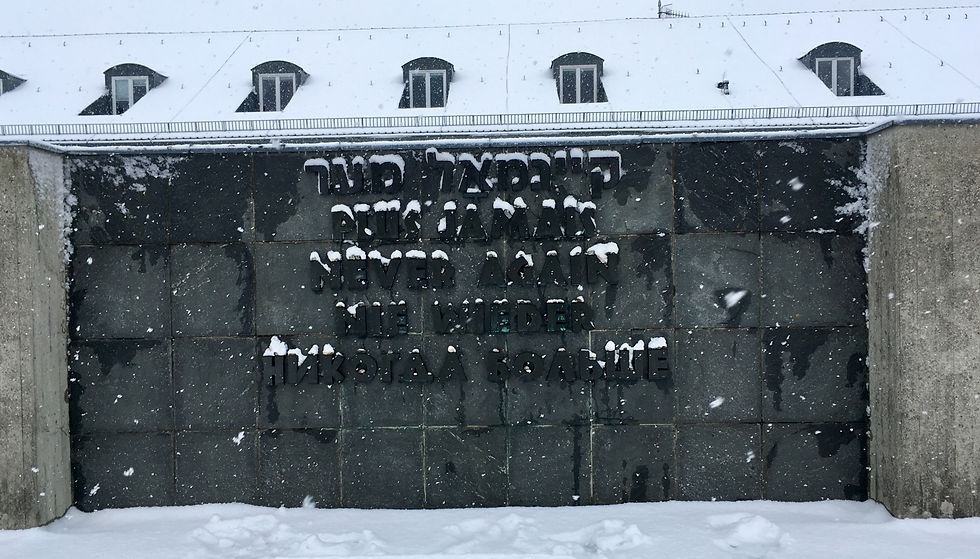"Never Again" Dachau, Jan. 2019
- Scott Williamson
- Jan 31, 2019
- 2 min read

I'm still processing the powerful and disturbing day spent at Dachau KL earlier this month. Here are some images from our 9-day trip to Munich at the start of 2019. This personal "Winterreise" ("Winter Journey," after the Schubert song cycle I'll be singing in Amherst Feb 10) was inspired by an exhibit devoted to the Nazi's manipulative use of opera during the Third Reich.

"HITLER.MACHT.OPER" plays on the double meaning of "macht" which is both verb for "make" and noun for "power."

The original entrance gate to Dachau, with the Nazi's odious slogan "ARBEIT MACHT FREI" ("Work makes you free") is now under glass in the camp museum, having been stolen and then recovered several years ago. When I first visited Dachau in 1998, the Museum wasn't there, the original gate was still in place, and some of the striking sculptures and memorials still in progress. I trace my own journey to Judaism back through that visit, and a 1996 visit to Buchenwald (outside Weimar).

The Jewish memorial is at the end of the Poplar-lined row of grounds where more barracks once stood.


International Holocaust Remembrance Day was January 27. After reading unsettling stories from Texas and Poland about continued distortions of history, "Never Again" is never untimely.

Theodor Adorno's famous statement, "after Auschwitz there can be no poetry" challenges anyone who confronts the Shoah in art.

David Ludwig Bloch's bronze sculpture is one of the last memorials one encounters in the Dachau museum. The sculpture group of prisoners (Häftlinge) divides the end of the museum's documentary wings from its room devoted to a Book of Names and international memorials like Bloch's.

The center of Dachau's grounds features this memorial wall with French, English, German and Russian translations of the text below.

"May the example of those who were exterminated 1933-1945 because they resisted Nazism help to unite the living for the defense of peace and freedom in respect of their fellow men."
I'll create other posts to share images and impressions from visits to other museums, like "HITLER.MACHT.OPER."
The Lenbachhaus contains a number of artists the Führer deemed "degenerate" like Kandinsky and Klee. Its gallery of Germany's most famous living artist, Gerhard Richter is devoted to the latter's Auschwitz-Birkenau series of photos and the "Abstract Images" he created from them.







Comments